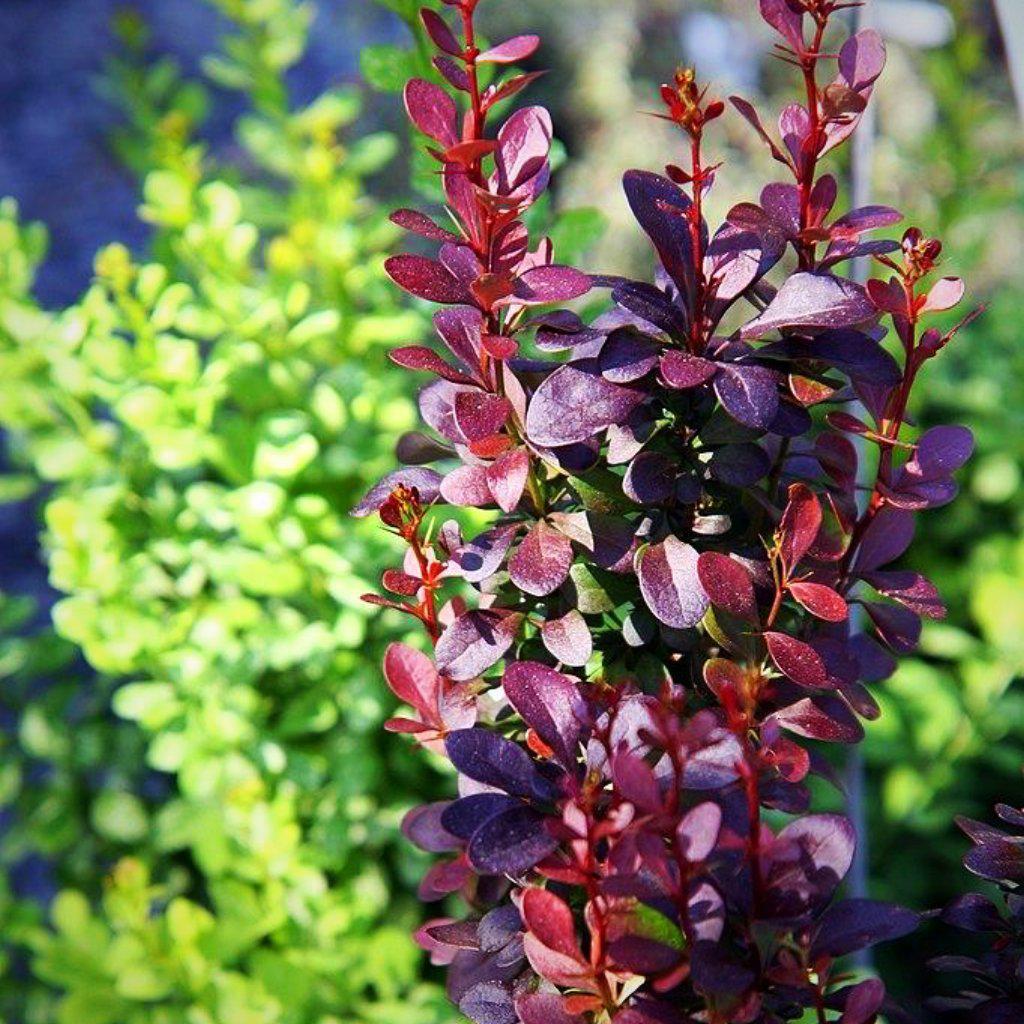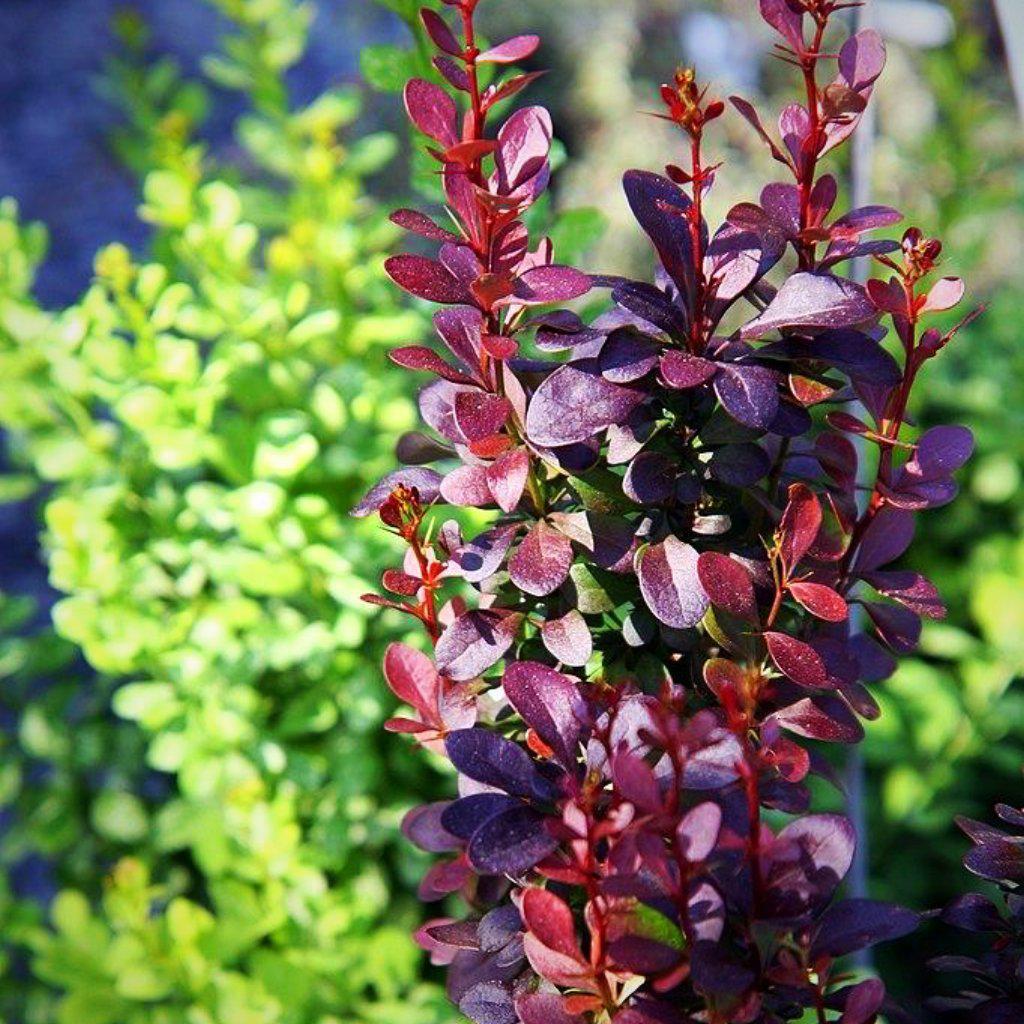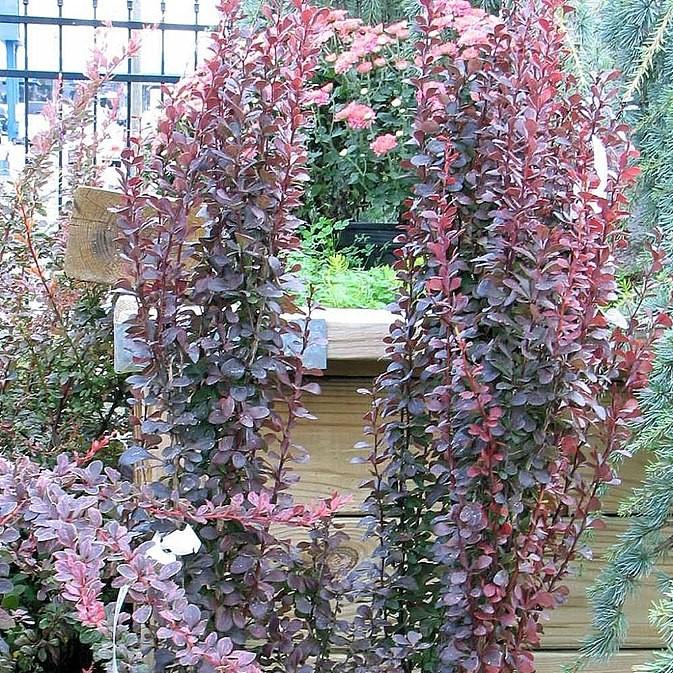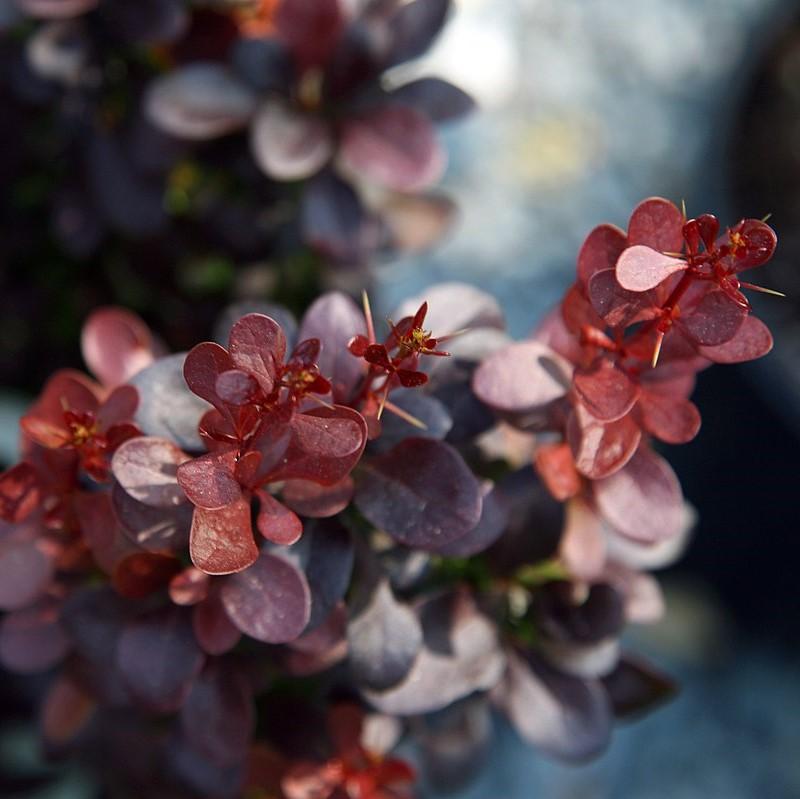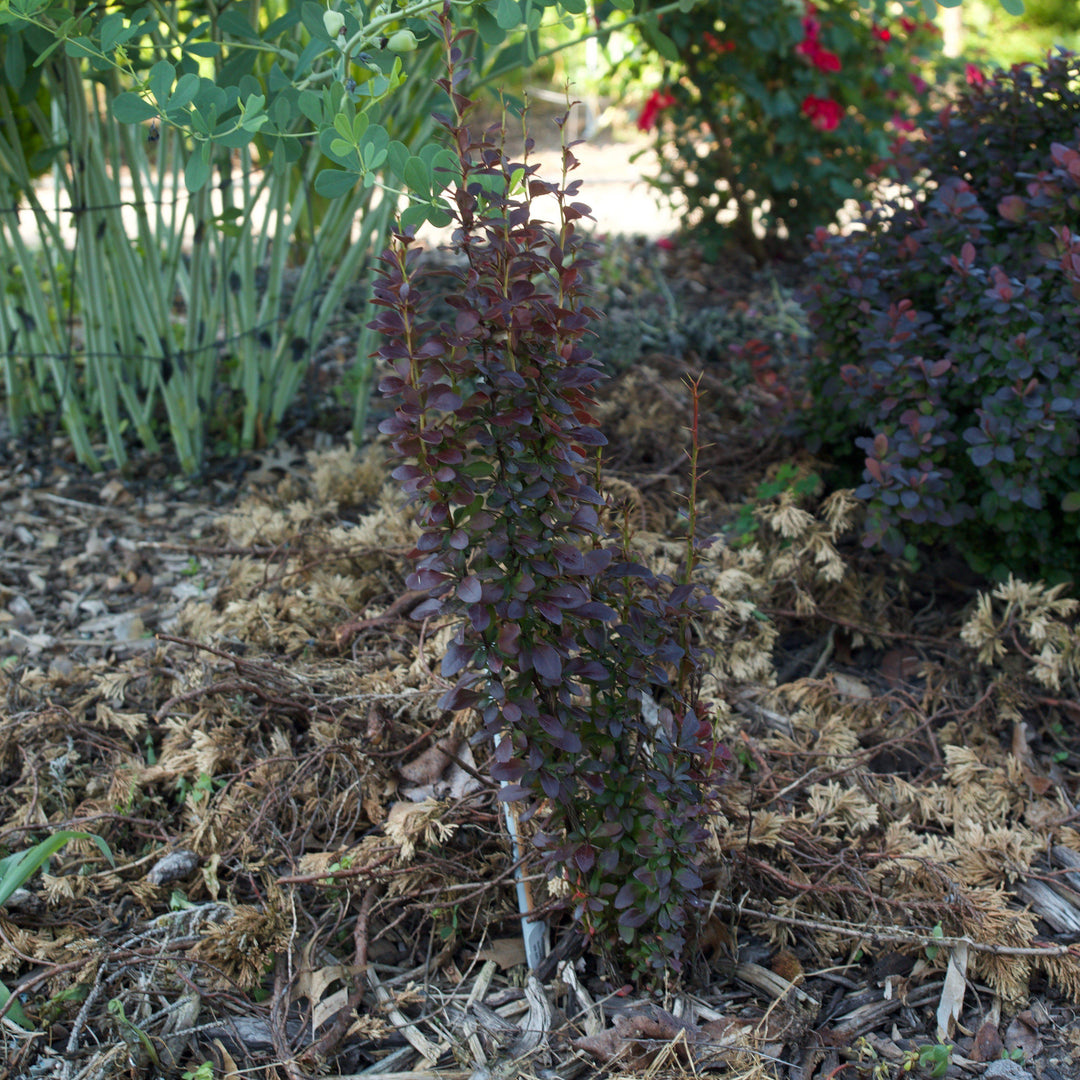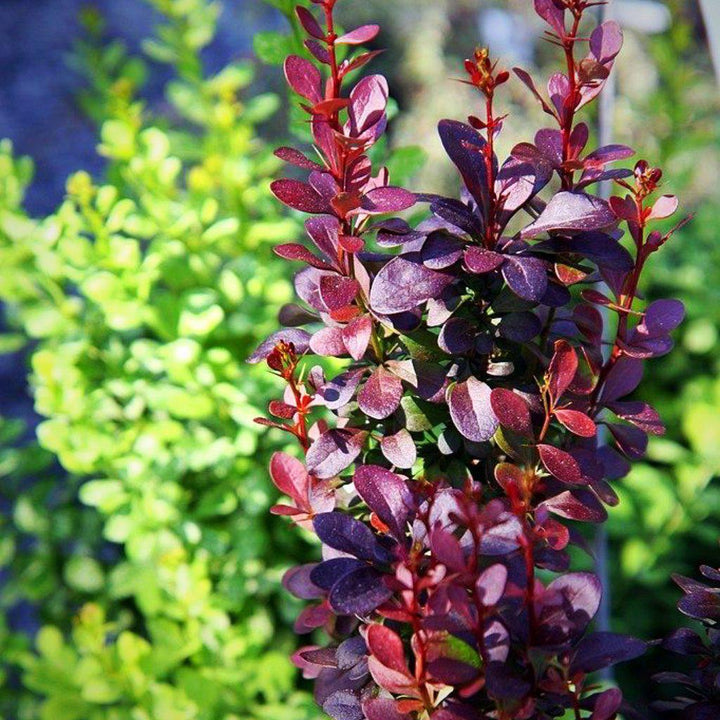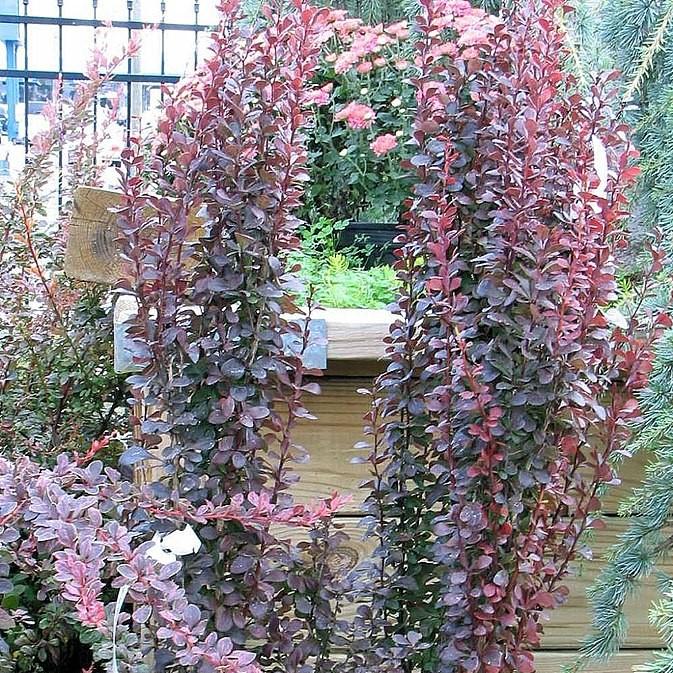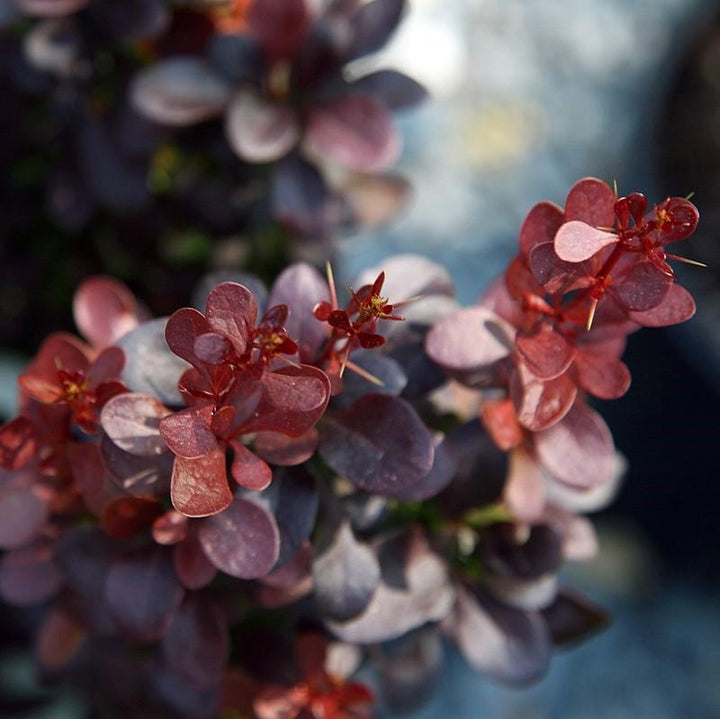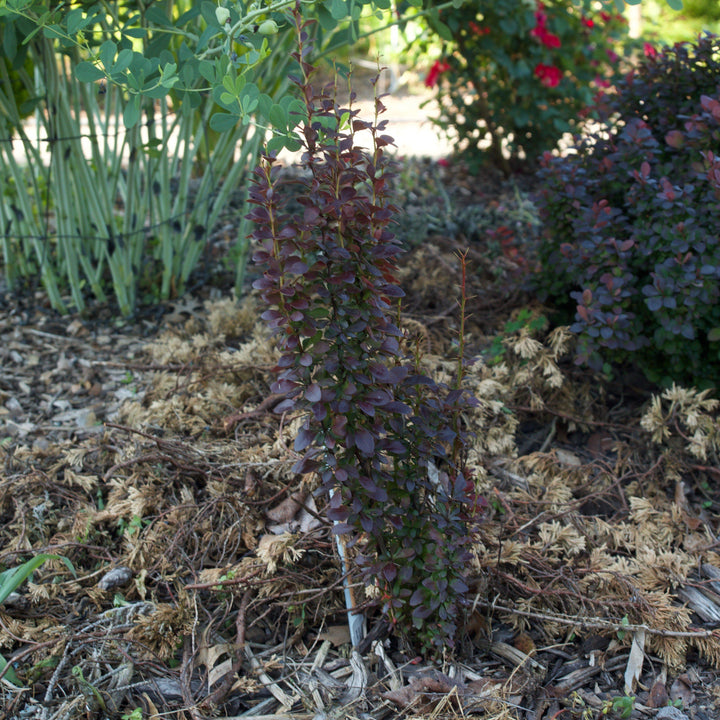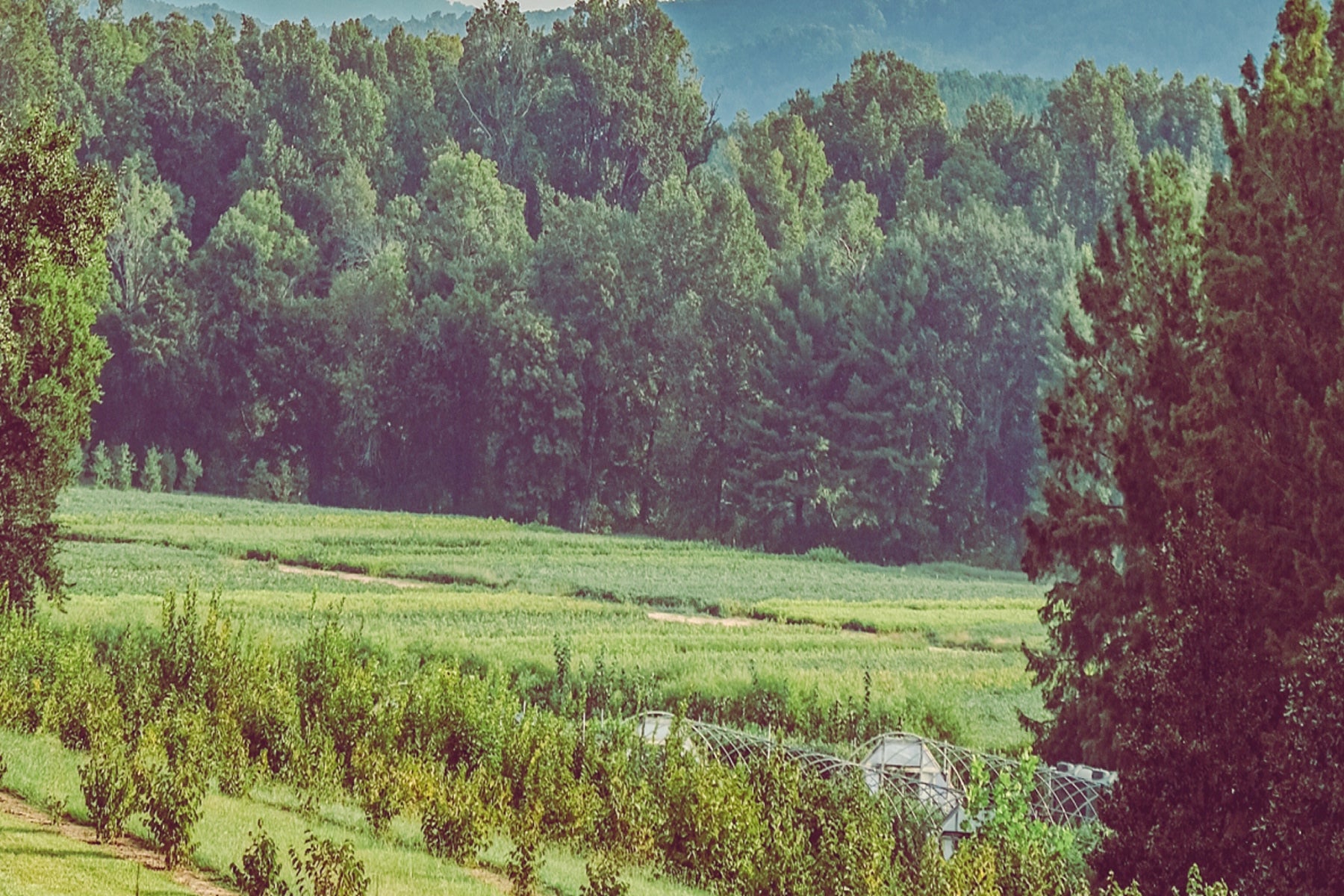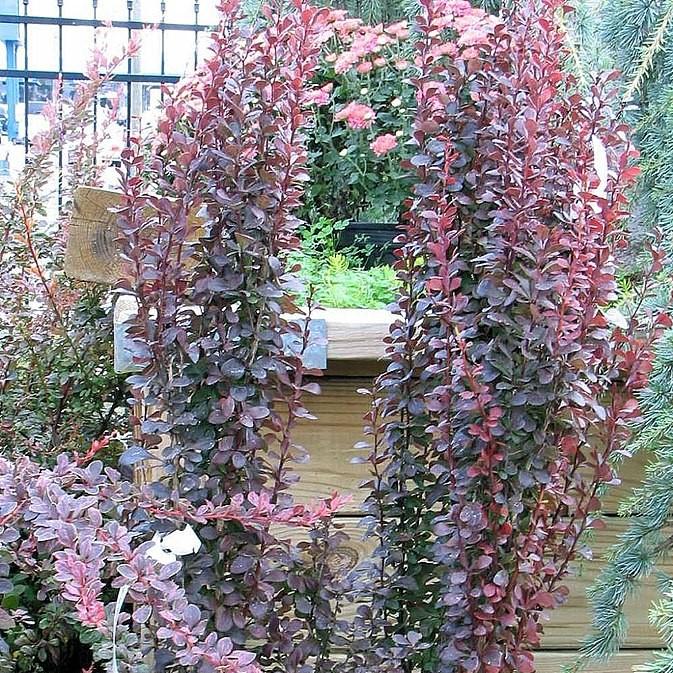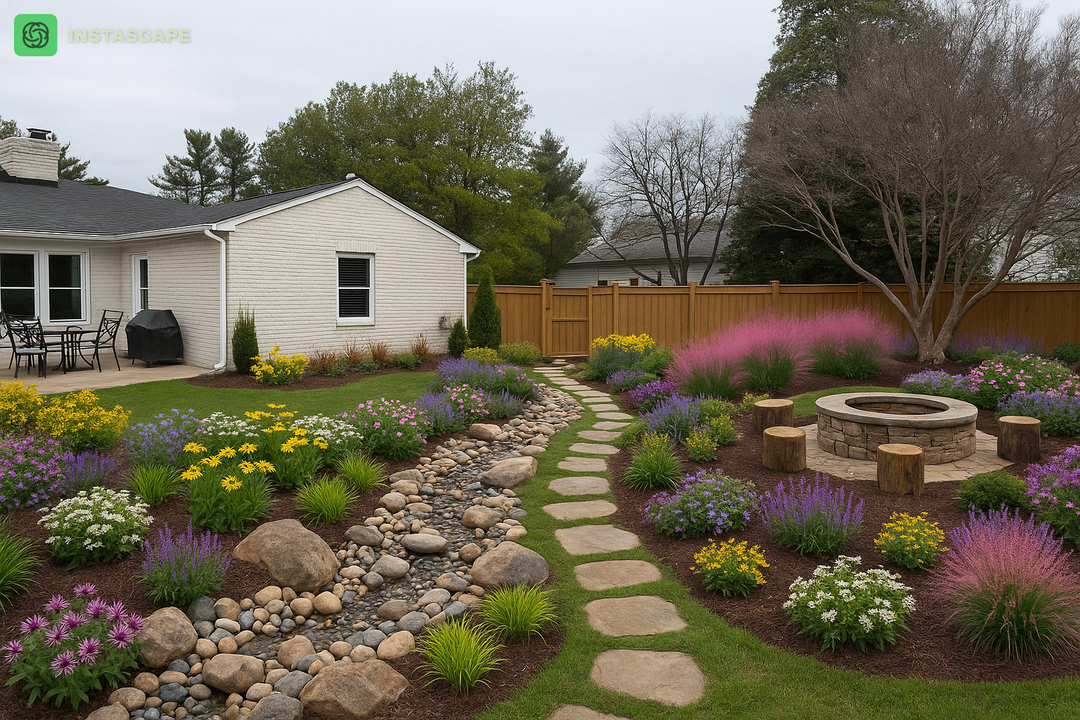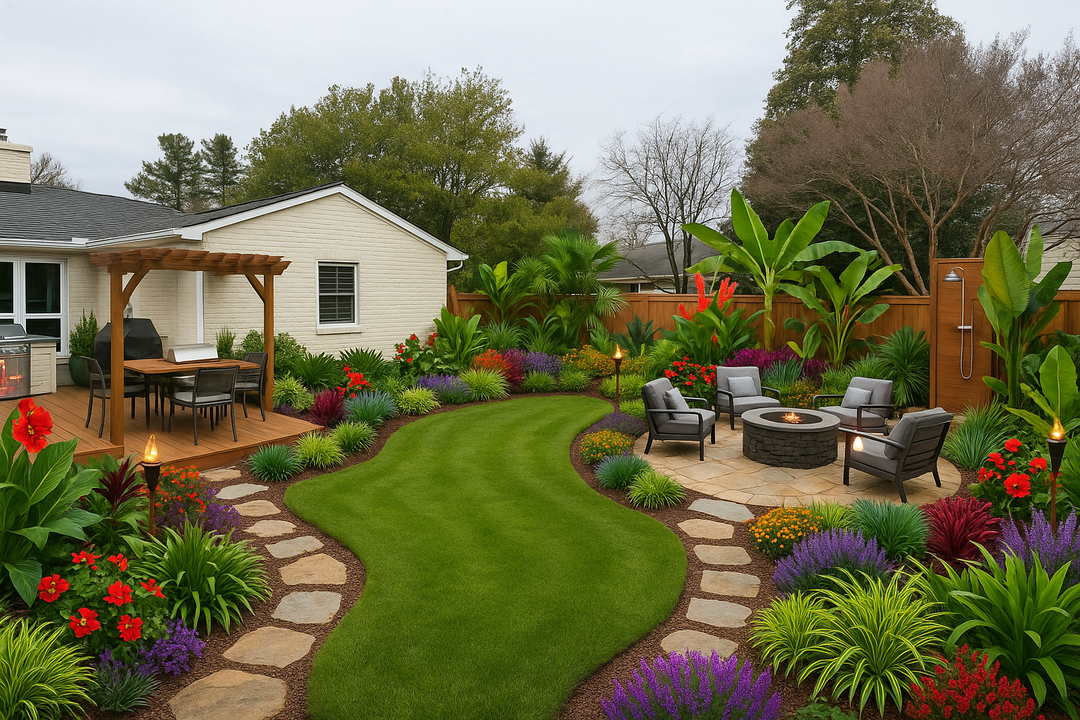Helmond Pillar Barberry is a narrow columnar branching deciduous shrub valued for its vibrant foliage that grows full to the ground. The small leaves emerge in spring as a dark reddish-purple against its thorny red-brown stems. Helmond Pillar Barberry has unnoticeable tiny yellow flowers bloom in spring that gives way to small clusters of fruit that last after the foliage falls. Best color in full sun and well-drained soils. Drought and deer resistant.
Barberry has known use of the root bark as an anthelmintic, antiseptic and febrifuge, and can be used orally as a treatment for various enteric infections.*
|
Type: |
|
|
Height: |
4’ - 5’ |
|
Spread: |
1’ - 2’ |
|
Spacing: |
2’ |
|
USDA Hardiness Zone: |
4 - 8 |
|
Culture: |
|
|
Bloom Color: |
Yellow |
|
Season of Interest: |
MAINTENANCE NEEDS: Low maintenance. Some susceptibility to bacterial leaf spot, anthracnose, root rots, wilt, aphids, barberry webworm, and scale. Highly invasive in the Eastern States.
LANDSCAPE USES: Accents or Group Plantings, Borders, Woodland Gardens, Wildlife Gardens, Xeriscape, Rock Gardens, Groundcover, Foundation Plantings, Hedges, and Containers
COMPANION PLANTS: Peony, Hydrangea, Spirea
IMAGES: Photo by David J. Stang, Berberis thunbergii Helmond Pillar 3zz, CC BY-SA 4.0, (2) Photo by David J. Stang, Berberis thunbergii Helmond Pillar 0zz, CC BY-SA 4.0, (3) Photo by David J. Stang, Berberis thunbergii Helmond Pillar 2zz, CC BY-SA 4.0, (4)Photo by F. D. Richards, Berberis thunbergii f. atropurpurea 'Helmond Pillar' (Barberry)
*As plants have ranges in appearance they may not appear as the images shown
*ServeScape does not take any responsibility for any adverse effects from the use of plants. Always seek advice from a professional before using a plant medicinally.

